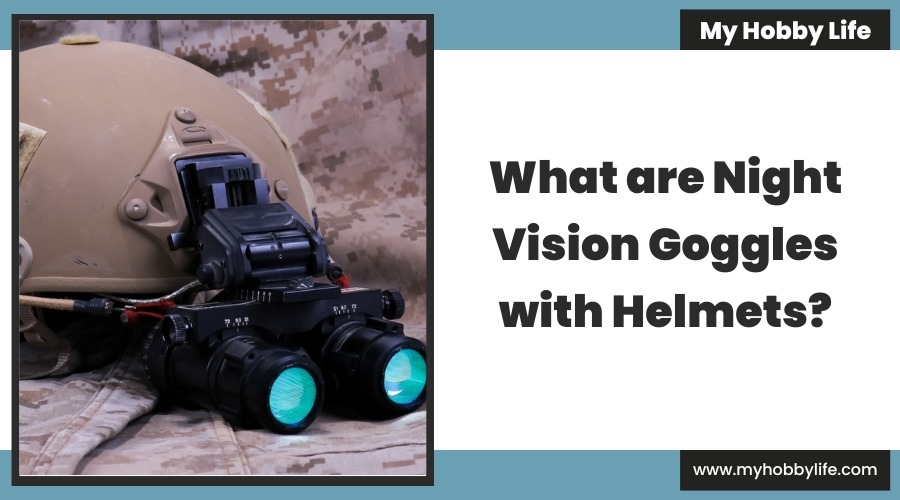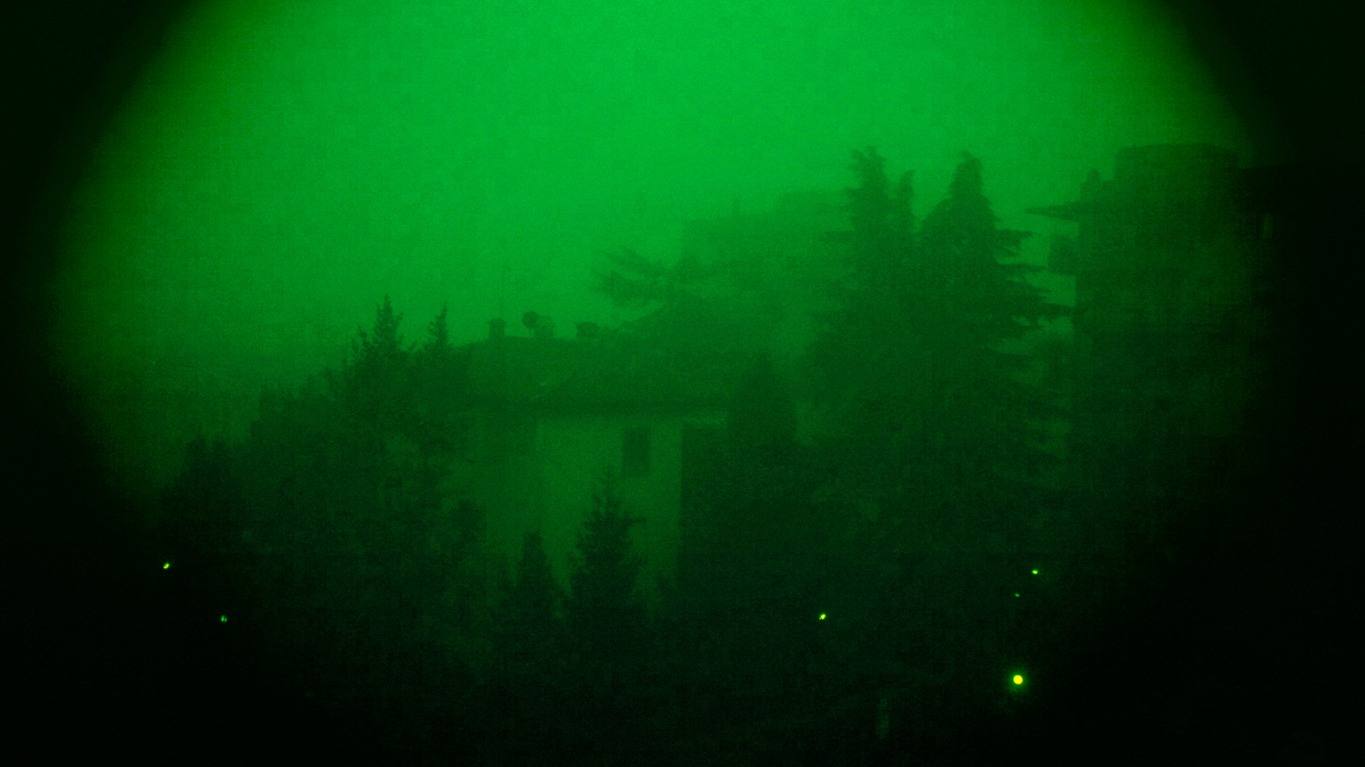While evolution in the last million years has brought massive changes in mankind, humans still weren’t able to possess some of the incredible abilities and senses acquired by some members of the animal kingdom. One particular trait is the capability to efficiently see in the dark, which cats, foxes, wolves, mice, owls, and bats, can effectively do.
Fortunately, what we have is intelligence. We use technology and continually make advancements, allowing us to overcome this shortcoming and adequately see in low-light conditions.
Today, you can find night vision devices like binoculars and monoculars that can let you see what is hidden in the dark. The catch is that they may be awkward and impractical to carry around, especially when you’re doing certain hobbies.
That’s where night vision goggles with helmets become handy. They allow you to see in the dark while freeing your hands from situations and activities where you may need them.
So, continue reading below as we’ll delve deeper into the world of night vision goggles with helmets – helping you realize why they’re essential for any hobby, job, or task you do when the lights are out.
What are night vision goggles with helmets? How do they work?
Night vision goggles, also called NVGs, are electronic devices that enable the wearer to see in the dark. Unlike other popular night vision devices, they serve as a hands-free option as you only need to place them on your head like a headgear. Plus, they also cover both eyes, giving the user better depth perception than when using a camera or equipment with a single eyepiece.
But how do night vision goggles work? It depends on the device you’re using. Night vision goggles are powered by two types of technology: image intensification and thermal imaging.
Image Intensification Technology
Image intensification or image enhancement makes use of existing or available light and amplifies to make images easier to see. Note that tiny traces of light are present during the night. NVGs using image intensification technology gather all this light and intensify it to help you see whatever is going on in the dark.
First, light, which is made of tiny particles referred to as photons, enters the night vision goggles. Sources of the ambient in low-light conditions usually come from the moon and stars above or light bulbs around the area. Once in, the NVGs alter the way these photons behave by turning them into electrons when they hit the light-sensitive surface called the photocathode. As a result, the process enhances or brightens the light.
Your eyes see the upgraded photos, making the previously low-light area appear brighter. Typically, a green filter is utilized to make the amplified light more comfortable and easier for the eyes to see. So, what people picture most of when thinking of night vision where everything is coated in green hue is actually image intensification technology.
Just be wary that this type of technology only allows low levels of light to be easier seen. It cannot work in total darkness and or make something out of nothing.
Thermal Imaging
The other type of technology night vision goggles use is thermal imaging. Hot objects, such as human and animal bodies, exude invisible heat in the form of infrared light.
Night vision goggles that utilize thermal imaging capture all that infrared light and translate it into a color or image that we can see. As such, thermal imaging can work in total darkness, given that there is something that’s giving off heat.
The amount of heat being made by the object dictates how it is displayed by the unit. Objects that produce more heat show up in warmer and more vibrant colors like reds, oranges, and yellows, while those objects that emit less heat appear in cooler colors like blues and purples.
Other night vision devices may display black-and-white images, with hotter objects appearing brighter and cooler objects appearing darker.
Though thermal imaging is more useful in the darkest conditions and usually works better when trying to make people see in the dark, you will find most models in the market today using image enhancement technology.
What hobbies are night vision goggles helmets useful for?
While night vision goggles with helmets are commonly used in the military, various hobbies incredibly benefit from these devices. Such hobbies include:
Hunting
Hunters benefit a lot from night vision. First, it makes hunting safer. As you can see better in the dark, you’re less likely to trip or fall and less likely to accidentally shoot another hunter or a protected animal. By using night vision goggles with helmets, you can see your prey at a distance even in the dark, also increasing your accuracy and giving you a better chance of successfully taking home your quarry.
Night Fishing
While it involves hunting different animals, night fishing entails the same necessities. Having night vision through night vision goggles makes it easier to see prey, currents, water-temperature breaks, and other signals that might signal the presence of marine animals. These devices also make it easier to navigate and scan around for obstructions, making night fishing far safer.
Wildlife Viewing
Though you can see many types of animals during the day, there are also fascinating nocturnal animals that are worth seeing. Night vision goggles with helmets open up a new world, allowing you to see elusive animals that only appear when darkness sets in. It’s like a change of characters and you’ll be surprised to find a number of different types of birds, mammals, and other creatures doing their business after the sun goes down.
Are night vision goggles with helmets legal?
Yes, these devices are generally legal in the United States. There’s no stopping you from using night vision goggles with helmets legally. Just be wary that some states may prohibit or restrict their usage for some conditions. As such, it’s still best to check with your local state laws regarding night vision devices so you can stay out of trouble.
What are the factors to consider when buying night vision goggles with helmets?
By now, you might probably be enticed to buy your own night vision goggles with helmets. However, be mindful that purchasing can be tricky, especially since there are lots of elements to take into account when shopping for these devices. Not to mention that there are also lots of options flooding the market that makes the selection process a more daunting task. With that, we’ve listed all the important factors that you need to consider to ensure that you end up with a smart decision and enjoy your purchase.
1. Purpose
First and foremost, you need to know what you intend to use the device for. Aside from hobbies, night vision goggles are useful in other industries, so your preferred usage will be crucial to help you find the right model to buy.
For instance, NVGs for military and special operations are different from the ones you will need for birdwatching or for night photography and video shooting. Different specifications are also needed if you’re planning to use them for patrolling, object security, or air and sea navigation.
You’d never want to spend much on superior technology required for hunting if you only wish to casually see wildlife lurking in your backyard at night. Knowing the purpose of your purchase will help you narrow down your choices and make your buying journey a whole lot easier.
2. Generation
Generations describe the performance you can expect from a night vision device. Today, you will find four generations (1-4). The higher the number, the better performance, as well as price, brightness, clarity, and longevity.
After thorough analysis, the U.S. military decided that Generation 4 technology has only improved Generation 3. As such, they are only using Generation 1-3. Still, you will still see some manufacturers labeling their products as GEN4 or 3+.
- GEN1: Generation 1 night vision devices date back more than half a century. They were invented in the 1960s and were first used during the Vietnam War. These devices are intended for short-range use only and require moonlight to function. As this technology is considered ancient, you’ll find them at cheap prices on the market today. Anticipate that they possess the worst resolution, field of view, and life expectancy, but they will usually suffice for recreational and casual use.
- GEN2: Generation 2 night vision devices feature a huge leap from their Generation 1 counterparts. It includes vast improvement in terms of performance, clarity, efficiency, image quality, range, and general performance. Plus, they are also compact, lightweight, and portable. What allowed such an upgrade is the inclusion of the Micro-Channel Plate or MCP. Unlike their GEN1 predecessors, GEN2 NVDs can work passively in low-light conditions without an IR illuminator. With the given advancements, GEN2 devices cost more but offer a longer lifespan than GEN1 devices. Be wary, however, that products in this generation are not manufactured equally, so there can be significant differences in performance.
- GEN3: Generation 3 night vision devices are the superior models you can find in the market today. As such, they carry a hefty price tag, but you’ll be rewarded for their exemplary performance. Currently used by military and special forces, these devices offer the best resolution and the best performance in low-light settings. They are also far durable, reliable, and have a long lifespan. Also able to function passively, GEN3 NVDs also don’t require an IR illuminator but boast the best brightness and clarity.
- GEN4: Generation 4 is a relatively new generation and devices under this class are still in their early stages. They are not common among civilians and at the moment, usually feature a removable protective coating on the Micro-Channel Plate that raises image clarity by about 20%. With that, they aren’t really recognized by many and are regarded more like a GEN3+.
3. Battery Life
The next factor that you should consider is battery life. Regardless of whether you’re aiming to buy night vision goggles, a monocular, or a camera, all these night vision equipment needs a power source to operate. With that said, the battery life of the device plays a crucial role because if they die, you’ll be left out in the dark.
Some models have built-in rechargeable lithium batteries, while other units operate using standard battery sizes (like AA or AAA). The longer the battery life, the less frequently you need to charge or replace batteries, and the less chance of the device’s failure due to a drained power source.
4. Resolution
Resolution is a parameter that describes the night vision goggle’s ability to display two close lines or points separately. The higher the resolution, the clearer and crisper the image. It is typically measured in lines/dashes per millimeter (LMP). It’s one of the main metrics that determine the cost of any night vision device, which means that the most expensive or premium models feature the best resolution.
5. Magnification and Field of View
Unlike binoculars, night vision goggles with helmets seldomly offer the ability to magnify images and make them appear closer. While it may sound like an advantage, remember that as magnification increases, the field of view decreases. That means that the regular 1x magnification of these devices offers the widest field of view, which in many cases are more critical. But still, you may consider getting other NVDs should you need magnification.
6. Range
Night vision goggles with helmets can only function efficiently at specific ranges. The range is one of the major parameters that separates GEN1, GEN2, and GEN3 units. For Generation 1, devices under this class won’t be as effective beyond 75-yards. Generation 2 devices show a tremendous improvement as they effectively function at 200 yards. On the other hand, Generation 3 models have the upper hand, being able to operate effectively at 300 yards or more.
7. Lifespan
Unlike other gadgets and pieces of technology, night vision devices are meant to work for a specific length of time. Depending on how much you’d be using your night vision goggles, you may want to check the longevity of your preferred mode. In general, GEN1 devices have the shortest runtime of around 1,000-1500 hours. GEN2 units have a lifespan of 2,500-5,000 hours, while GEN3 devices can operate from 7,5000-10,000 hours.
8. Ballistic vs. Non-Ballistic Helmets
Helmets that go along with night vision goggles come into two types: ballistic or non-ballistic (bump) helmets. As its name suggests, ballistic helmets are specifically designed to give your head protection from ballistic objects, such as bullets and shrapnel, or other high-projectile objects.
On the other hand, non-ballistic helmets don’t offer the same protection but they can protect you from slow-moving threats like falling debris or thrown rocks, or from blunt or sharp obstacles where you may hit your head.
Typically, you will only need a ballistic helmet when you’re part of the military or law enforcement. If you will only be using your night vision goggles for hobbies like hunting, night fishing, or airsoft, a non-ballistic helmet will already suffice.
9. Durability and Weather Resistance
Like any other equipment or gear that is designed for the outdoors, night vision goggles with helmets must also be able to endure the rigors, abuses, and elements involved in off-grid use. Given that these devices have glass lenses and electronic parts that make them vulnerable to damage, you should invest in a pair with a sturdy case, strong rubber protection, and toughened lenses. It’s also worth checking the Ingress Protection (IP) ratings, which is a metric that describes a unit’s water/weatherproofing capacities.
10. Ergonomics
When you are selecting a pair of night vision goggles with helmet, you also need to devote attention to its size, weight, and ease of use. All these three elements determine how comfortable the device will be. Remember, you will be wearing them on your head all the time. If the device is too bulky, excessive in weight, and isn’t user-friendly, you can’t operate it with ease, resulting in less efficiency, comfort, and enjoyment.
11. Price
Lastly, the cost of the device will always be part of the consideration. Note that you should always correspond the price of the product to the benefits and features it will bring. Never spend hefty amounts for a superior model if you’re only planning to use it for casual fun. It goes the other way around where you should expect to pay an expensive price tag if you intend to use the device for serious work.
Be wary that the NVDs like night vision goggles can range from a couple of hundred to thousands of dollars. On the cheaper end, there are not too many differences between the models apart from extra accessories and features for optimum comfort.
On the more expensive end, the gap can be huge and it is where you can find models meant for military or professional use. For most casual users and beginners, going for units above $1000 may not be worth it.
Takeaway
Having a clear vision in the dark is impossible for our naked eye. Thankfully, we have different night vision devices that allow us to see things competently at night.
What’s even great is the availability of night vision goggles with helmets, which frees us from the confinement of other NVDs that restrict our hands.
So, whatever hobby you do after sunset, make sure to get the assistance of night vision goggles. By using them, you can have a safer activity and enjoy whatever there is to see amidst the dark surroundings. To know more about what to look for when it comes to night vision goggles, read our Guide to Choosing Night Vision Equipment.


